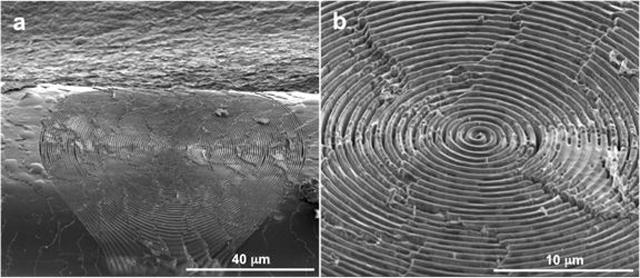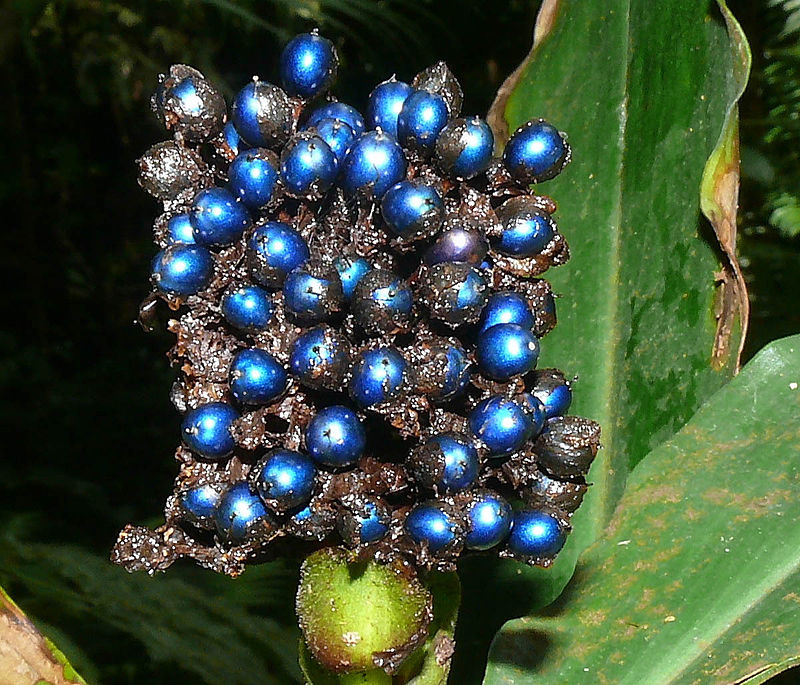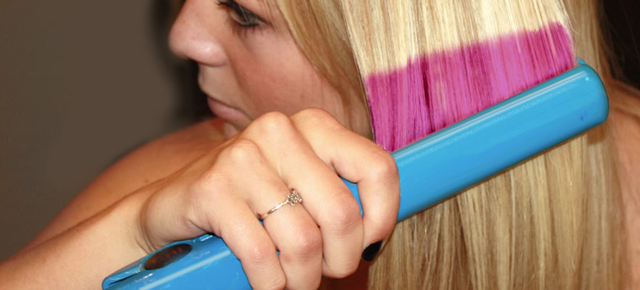In a weirdly serious bit of hair research, engineers have figured out how to change hair colour without an ounce of hair dye. The only catch? You need a focused ion beam. Colour is in the eye of the beholder after all. When microscope spirals and hyperbola are etched into strands of hair with a focused ion beam, those tiny ridges work together to diffract light. Certain wavelengths are cancelled out, others amplified and you get a whole new colour. No hair dye needed.

Nano patterns etched into hair. University of New Mexico.
The procedure is detailed in a
paper in the Journal of Cosmetics, Dermatological Sciences and Applications, where engineers at Los Alamos National Labs and the University of New Mexico tested strands of black, brown, and blonde hair. Unlike with hair dyes, this procedure actually worked the best in brown hair.
The photo at the top of this post, which accompanied University of New Mexico’s press release about this study, is not, we should say, reality so much as imagined reality. The engineered have not actually created a hair iron that can change your hair colour; they have done it to individual strands of hair in the lab with a million dollar machine.
Nevertheless, this frivolous-seeming hair exercise leads us to the interesting idea of “structural colour.” Structural colour was not invented by these hair-etching scientists — it’s present all throughout nature.
You may have heard the assertion that “there is no blue in nature.” It’s obviously not completely true — look around — but blue in nature is often structural. Take a peacock’s wings, for feather, where microscopic ridges scatters light to appear blue to our eyes. Or marble berries, supposedly the most intense blue in nature, which has layers of cells that amplify blue with constructive interference.

Marble berries. Juliano Casto/Wikimedia Commons
Aside looking being pretty, structural colours have some advantages over traditional dyes or paints. For one, they aren’t dyes or paints, so they lack the possible nasty chemicals we might find in them. Structural colours also don’t fade over time in the sun. There could be all types of uses for the non-toxic structural colours that scientists are working to develop — much more than hair colour. [University of New Mexico]
Images via University of Mexico
